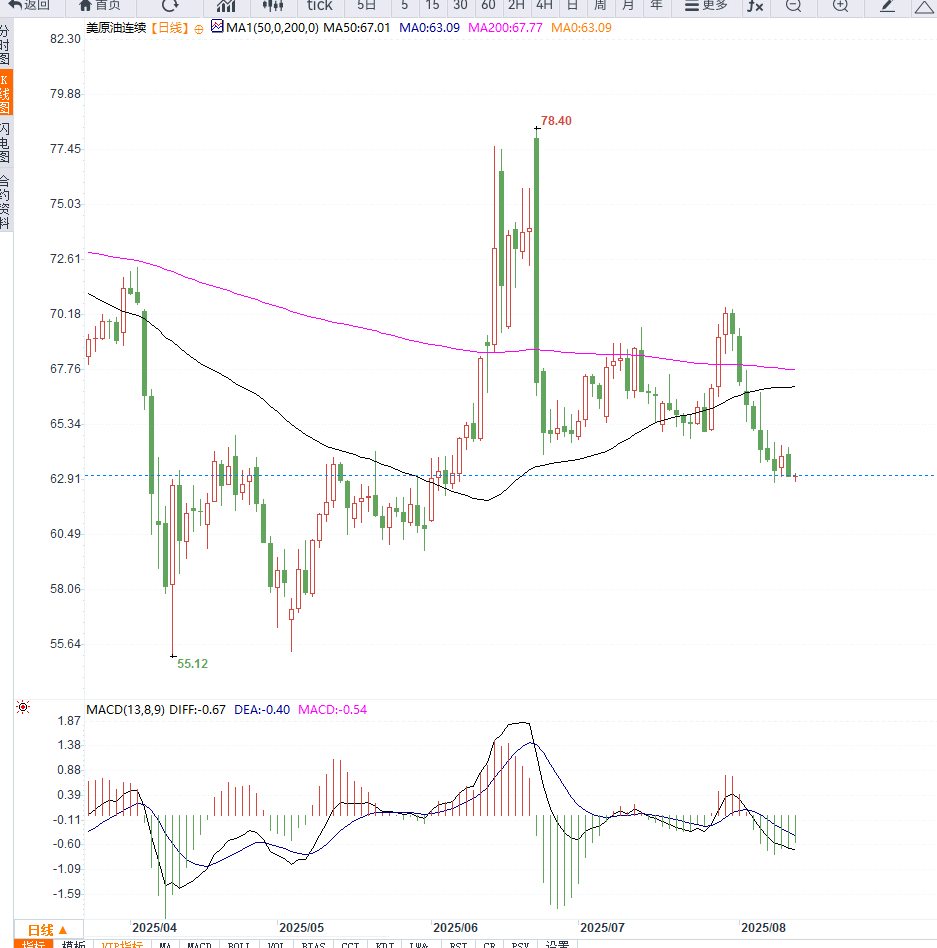Crude oil trading reminder: Concerns about excess inventory on the supply side are putting pressure on oil prices to fall again, beware of an accelerated downward trend
2025-08-13 09:50:41
The latest data showed that U.S. crude oil inventories rose by 1.52 million barrels last week, suggesting that the summer consumption season is drawing to a close. Gasoline inventories fell, while distillate inventories rose slightly.

Market participants pointed out that if the data released by the EIA later also shows a rebound in inventories, it will further confirm that refineries are gradually reducing their operating rates. The peak of summer demand in the United States usually lasts from Memorial Day in late May to Labor Day in early September.
According to market surveys, analysts generally expect the EIA report to show that U.S. crude oil inventories fell by about 300,000 barrels last week, but the decline was significantly smaller than the decline during the summer peak.
On the other hand, the latest monthly reports from OPEC and the EIA both indicate that global crude oil production will increase this year, putting some pressure on oil prices. However, both reports predict that the United States, the world's largest oil producer, will see its production decline in 2026, while oil and gas production in other regions will continue to grow.
The EIA predicts that U.S. crude oil production will hit a record high of 13.41 million barrels per day in 2025, thanks to increased individual well production, but production will decline in 2026 due to low oil prices. OPEC expects global crude oil demand to increase by 1.38 million barrels per day in 2026, 100,000 barrels more than previously predicted, while the demand forecast for 2025 remains unchanged.
On the geopolitical front, the White House on Tuesday cooled expectations of a quick ceasefire agreement between the US and Russia, which means that sanctions on Russian crude oil exports may not be lifted quickly in the short term, thus supporting oil prices to some extent.
However, market expectations for further sanctions have receded as U.S. President Donald Trump and Russian President Vladimir Putin plan to meet in Alaska on Friday to discuss a possible end to the conflict.
"Trump played down expectations of what will be achieved from his meeting with Putin ... However, market concerns about additional sanctions on Russian crude oil continue to decline," said Daniel Hynes, senior commodities strategist at ANZ.
From the daily chart, US crude oil prices have found initial support around $63, but the short-term moving average is trending downward, indicating that bullish momentum is weakening. If the price falls below the support level of $62.50, it may further retest the $61.50 area;
On the other hand, if it can stabilize and break through the $64.50 resistance level, it will likely open up room for a rebound to $66.00. The MACD indicator shows a shortening of the momentum column, and the RSI remains in a neutral to weak range, indicating that oil prices may enter a period of range-bound consolidation. A directional breakthrough will await further catalysts from inventory data and geopolitical developments.

Editor's opinion:
The oil market is currently locked in a tug-of-war between bulls and bears. On the one hand, rising US inventories and expectations of production growth are weakening price support; on the other hand, geopolitical uncertainty continues to provide a floor for oil prices. In the short term, close attention should be paid to EIA inventory data and the outcome of the US-Russia summit, as these will directly impact market sentiment and price fluctuations.
- Risk Warning and Disclaimer
- The market involves risk, and trading may not be suitable for all investors. This article is for reference only and does not constitute personal investment advice, nor does it take into account certain users’ specific investment objectives, financial situation, or other needs. Any investment decisions made based on this information are at your own risk.





















